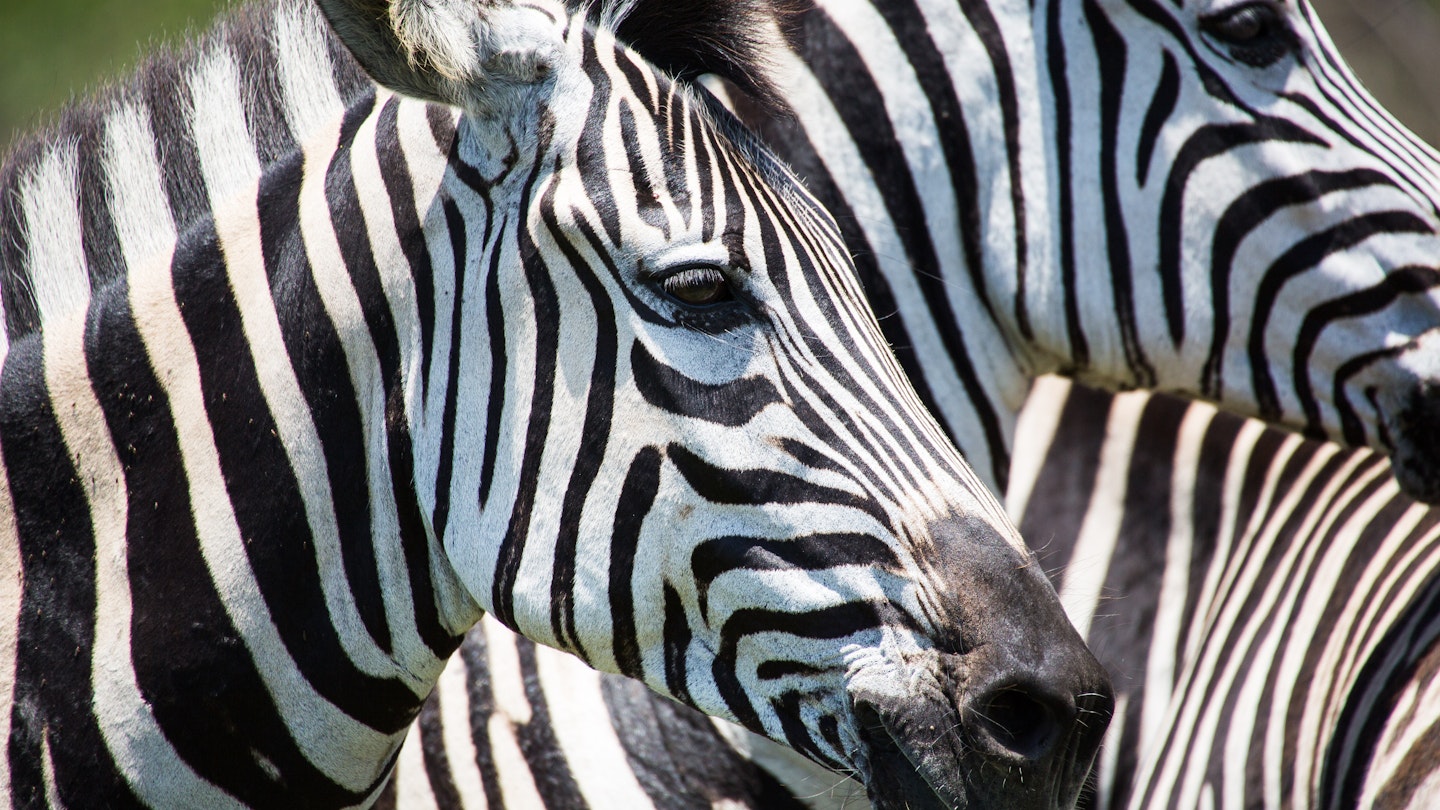From sea to sky, KwaZulu-Natal (KZN) shines like no other South African province. Its 600km-long, beach-lined coast serves as an unparalleled playground for visitors and locals alike, while the towering peaks and passes of the mighty Drakensberg mountain range enchant explorers. Between the two lies an enthralling landscape that beautifully intertwines cultures of past and present and is also home to some of Africa’s most extraordinary safari experiences.
KZN’s ‘Big Seven’
Spotting the Big Five (elephant, rhino, lion, leopard, and buffalo) has long been a rite of passage for many safari-goers. KZN will not disappoint in that regard, with Hluhluwe-iMfolozi Park, Tembe Elephant Park, and uMkhuze Game Reserve hosting these sought-after species. Uniquely, the province also offers the opportunity to observe two more mammoth-sized species, the southern right whale and great white shark.
Moreover, safari enthusiasts know that rewarding wildlife viewing isn’t solely about the big name animals. uMkhuze is home to approximately 400 bird species that often take center stage in visitors’ hearts. Another great example is iSimangaliso Wetland Park, a UNESCO World Heritage site aptly named for the valley of ecosystems within its 3280-sq-km boundaries, which include loggerhead and leatherback turtles, dolphins, hippos, and zebras.

Epic Mountainous Landscape
The Drakensberg, or ‘Mountain of the Dragons’, is the tallest range in Southern Africa and is one of the continent’s most remarkable destinations for hiking. As you take in the tumbling waterfalls, bubbling rivers, flat-topped ridges, dramatic peaks, wide valleys, and steep escarpments, prepare your legs for the ever-tempting terrain. Trails range from simple walks and half-day hikes to challenging treks of up to 12 hours. Additionally, multi-day trekking routes are perfect for those eager for more adventure.
Much of this breathtaking range is protected within the UNESCO World Heritage-listed uKhahlamba-Drakensberg Park, comprised of various South African national parks and reserves. Royal Natal National Park offers access to some of the most spellbinding scenery, including the iconic Amphitheatre, while Giant’s Castle features hiking trails and ancient rock-art sites.
Cosmopolitan Durban
Durban stands as more than just a base to explore the wilds of KZN; it is also a vibrant destination in its own right. The numerous beaches along the Golden Mile, alongside the revamped waterfront and thrilling activities in the new stadium, make it worth your time. Additionally, with the largest concentration of people of Indian descent outside of India, the city offers a unique and vibrant Asian atmosphere.

Beaches for Every Beach-Goer
The most well-known stretch of sand in KZN must be the deceptively named Golden Mile, a 5km-long stretch of beaches that flank Durban. Each beach presents a unique experience: Dairy Beach is renowned for reliable surf breaks; uShaka Beach provides a sheltered, safe shore that is perfect for families; Bay of Plenty Beach is the venue of choice for beach sports; Laguna Beach’s waters are ideal for jet-skiing; swimming is excellent off South Beach; and Suncoast Beach offers loungers for sun worshippers.
Furthermore, the 160km stretch of beaches south of Durban is a haven for surfers, while the quieter, more remote beaches to the city’s north promise sandy solitude. For something extraordinary, a visit to the beach at Cape Vidal in iSimangaliso Wetland Park is a must. Behind its mountainous dunes lie inviting swimming spots, and the journey may reveal glimpses of buffaloes, crocodiles, and hippos.
Traditional Culture
As the name suggests, KwaZulu-Natal is home to the Zulu nation, and the Zululand region allows for insight into this proud tribal group. Visiting traditional Zulu villages will not only offer a glimpse into their history, including that of the legendary King Shaka, but also shed light on the challenges they face in contemporary South Africa.
If possible, time your visit to coincide with one of the major Zulu festivals. One noteworthy event occurs on King Shaka Day (24 September), attracting countless Zulus who make the pilgrimage to KwaDukuza to honor the ultimate Zulu hero. Another vital celebration is the Reed Dance, where thousands of Zulu maidens gather before their king at King Enyokeni’s Palace.
Historical Battlefields
KZN is rich in historical significance, having been the site of numerous battles involving the Boers, the British, and the Zulu, which helped shape the history of South Africa. At Blood River, two fascinating museums present two sides of the story surrounding a battle on 16 December 1838. The thought-provoking Isandlwana Battlefield features monuments commemorating the lives lost when the Zulu emphatically defeated the British Empire. Nearby, Rorke’s Drift marks the site where 139 British soldiers famously defended against 4,000 Zulu warriors. Consequently, a visit to this Battlefields region is essential for history enthusiasts.

Ancient Art
The Drakensberg region of KZN was home to the San people for thousands of years, and traces of their life can still be seen through fascinating rock-art sites. At Kamberg Nature Reserve, a three-hour guided walk allows you to explore one of the most important galleries—Game Pass Shelter—where archaeologists were able to interpret the symbolism used in San art, enhancing understanding across Southern Africa. Battle Cave in Injisuthi serves as another incredible site, with stunning depictions of humans and animals believed to reflect elements captured in a spiritual trance.




